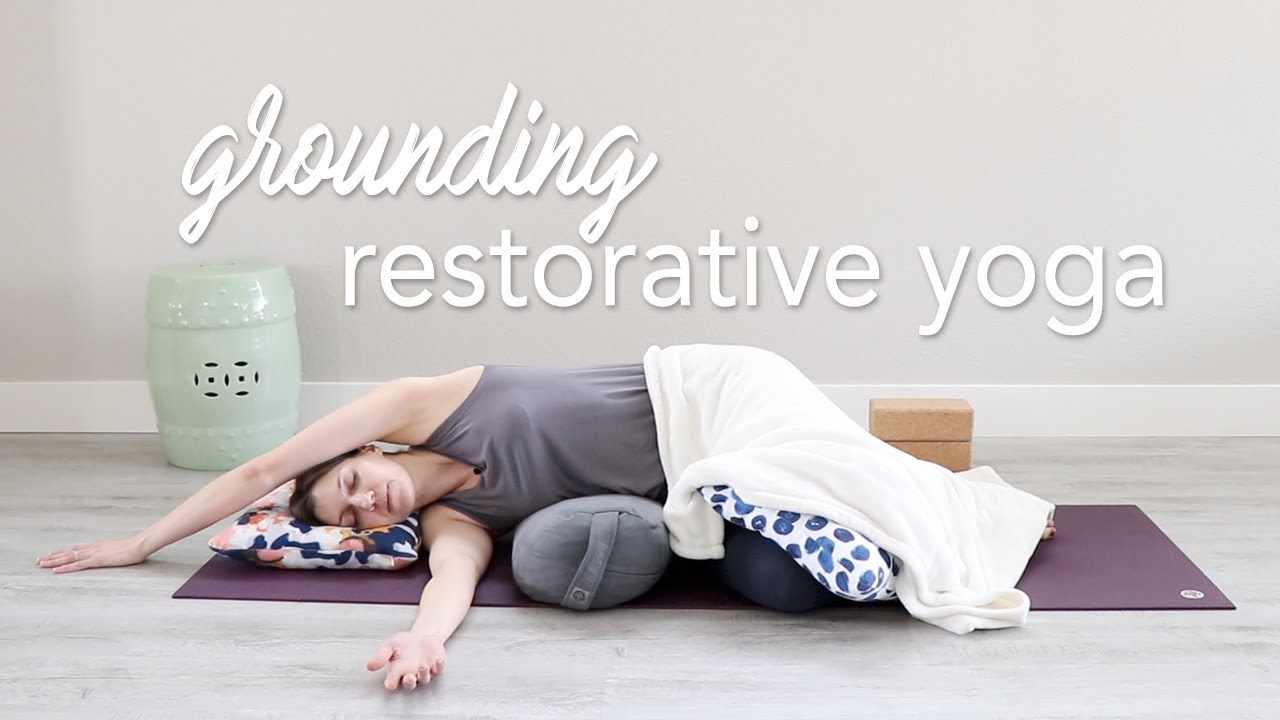
Kids love to do yoga poses. This easy and enjoyable activity is suitable for all ages. It isn't necessary to buy elaborate equipment or rent a large space to enjoy it. Here are some of my favorite poses for children. This backbend is great at stretching the spine and thighs. Make sure your knees and ankles are in a straight line. Place your arms at your sides and place them on top of your chest.
Try to get your child into the child position. It is the best choice for children who tend to sit on the ground all day. This pose is similar to a small bean, and requires a deep breath. This pose is great for children who spend too much time sitting. When you're doing this pose, ask your child to count up to five. This will help calm them and help them relax.

Children love the cow pose. It can be made more challenging by placing a blanket or pillow underneath their buttocks. This pose helps to calm the back and strengthen it. You can also try the "boat" pose, which involves standing on your buttocks in a "V" shape. Rocking your child can make this even more enjoyable. This pose is great for you and your child.
A good recovery pose is the kids' pose. Deeply breathe in and cross your legs. Next, bend forward and rest your head on the forearms of your child. While this pose may not last for long, it helps your child become more connected to their body. This will make you healthier. This exercise will also improve their coordination. They will be grateful for the time to relax. Once you are able to master this yoga pose, you can integrate it into your daily schedule.
The butterfly pose is another easy pose for kids. This pose is ideal for children under five years old because it can stretch the knees and thighs. This is a great way to calm your child's minds. Although it might seem difficult, the butterfly position is a great way of encouraging your child to stay focused. Butterfly poses are great for helping calm your child down. These can be achieved by sitting on the floor.

Children can move by taking a child's posture. They should be capable of holding the pose for several seconds at a stretch, and should be able properly to inhale. The child should also feel safe in this pose. By breathing slow and slowly, they should be able keep their balance. If they are able learn to balance, they'll be more likely to remain in the pose longer. Once they have mastered the basics, they can do it all by themselves.
FAQ
How much should I weigh for my height and age? BMI calculator and chart
Calculating your body mass index (BMI), is the best method to calculate how much weight to lose. The healthy BMI range for a healthy person is 18.5 to 24.9. Weight loss is possible if you aim to lose approximately 10 pounds per week. Enter your height in the BMI calculator.
Check out this BMI chart to determine if you are overweight or obese.
What is the difference between a virus and a bacterium?
A virus is a microscopic organism that cannot reproduce outside its host cell. A bacterium can be described as a single-celled organism which reproduces by splitting in two. Viruses measure only 20 nanometers in diameter, but bacteria is up to 1 millimeter in size.
Viruses are often spread through contact of infected bodily fluids like saliva, urine or semen. Bacteria are usually spread through direct contact with contaminated objects or surfaces.
Viruses may enter the body through cuts, scrapes. bites, or any other break in the skin. They may also enter through the nose, mouth, eyes, ears, vagina, rectum , or anus.
Bacteria may enter our bodies through cuts and scrapes on our skin, burns, insect bites, and other wounds. They can also be introduced to our bodies by food, water and soil.
Viruses and bacteria both cause illness. But viruses can't multiply within their hosts. They only cause disease when they infect living tissue.
Bacteria can grow in their hosts and cause disease. They can infiltrate other parts of the body. To kill them, we must use antibiotics.
What is the difference between sugar and fat?
Fat is an energy source from food. Sugar is a sweetener found in fruits, vegetables, and other foods. Both fats (and sugars) have the same calories. However, fats contain more than twice as many calories as sugars.
Fats are stored in your body and can cause obesity. They may cause cholesterol buildup and lead to strokes or heart attacks.
Sugars can be quickly absorbed by your body and give you instant energy. This causes blood glucose levels rise. High blood glucose levels can pose a danger because they increase the chance of developing type II Diabetes.
Exercise: Good for immunity or not?
Exercise is good for your immune system. Exercise increases white blood cell production, which helps fight off infection. You also get rid of toxins from your body. Exercise can help prevent heart disease and cancer. Exercise also helps to reduce stress levels.
Exercising too frequently can make your immune system weaker. You can cause muscle soreness by working out too hard. This can lead to inflammation and swelling. In order to fight infection, your body must produce more antibodies. Problem is, extra antibodies can trigger allergies and other autoimmune conditions.
So, don't overdo it!
Take herbs and other supplements to improve your immunity
Natural remedies and herbs can be used to increase immune function. Examples include ginger, garlic and oregano oils, echinacea, vitamin C, ginkgo loba, and echinacea.
These herbal remedies are not meant to replace medical treatment. Side effects may include nausea, diarrhea, stomach cramps (dizziness), headaches, dizziness and stomach cramps.
What is the difference between a calorie or a kilocalorie.
Calories are units that measure how much food has energy. Calories is the unit of measurement. One calorie is equal to one degree Celsius in energy.
Kilocalories are another term for calories. Kilocalories equal one thousandth of a calorie. 1000 calories is one kilocalorie.
How can I get enough vitamins?
You can obtain most of your daily requirement through diet alone. However, if you are deficient in any particular vitamin, taking supplements can help. Multivitamin supplements can be taken that contain all the vitamins you need. You can also buy individual vitamins in your local drugstore.
Talk to your doctor if you have concerns about your nutritional intake. You can find vitamins K and E in dark green leafy vegetable such as spinach, kale and turnip leaves, as well a variety of sweet potatoes and sweet potatoes.
Ask your doctor to help you determine the right amount of vitamin. Based on your medical history, and your current health status, your doctor will recommend the right dosage.
Statistics
- In both adults and children, the intake of free sugars should be reduced to less than 10% of total energy intake. (who.int)
- The Dietary Guidelines for Americans recommend keeping added sugar intake below 10% of your daily calorie intake, while the World Health Organization recommends slashing added sugars to 5% or less of your daily calories for optimal health (59Trusted (healthline.com)
- Extra virgin olive oil may benefit heart health, as people who consume it have a lower risk for dying from heart attacks and strokes according to some evidence (57Trusted Source (healthline.com)
- WHO recommends consuming less than 5% of total energy intake for additional health benefits. (who.int)
External Links
How To
What does the meaning of "vitamin?"
Vitamins can be described as organic compounds found in food. Vitamins are necessary for us to absorb nutrients in the foods we consume. The body cannot make vitamins; therefore, they must be obtained from food.
There are two types of vitamins: water soluble and fat soluble. Water soluble vitamins dissolve easily in water. Vitamin C,B1(thiamine), B2 (2riboflavin), and B3 (3niacin), as well as vitamin C,B1, B2 (riboflavin), and B3 (niacin), vitamin B6 (pyridoxine), vitamin folic acid (biotin), pantothenic, and choline are examples. The liver and fat soluble vitamins are stored within the liver and in fatty tissue. Examples include vitamin D, E, K, A, and beta carotene.
Vitamins are classified according their biological activity. There are eight major vitamin groups:
-
A - vital for healthy growth.
-
C is important for nerve function and energy production.
-
D - necessary for healthy bones and teeth.
-
E is needed for good reproduction and vision.
-
K - Essential for healthy muscles and nerves.
-
P – vital for building strong bones.
-
Q - Aids digestion and iron absorption
-
R - Red blood cells are made from red blood cells.
The recommended daily allowance of vitamins (RDA), varies according to age, gender, physical condition, and other factors. RDA values are set by the U.S. Food and Drug Administration (FDA).
For adults aged 19 and older, the RDA for vitamin B is 400 micrograms daily. Pregnant mothers need 600 micrograms per days because it is vital for the development and growth of their baby. Children ages 1-8 require 900 micrograms per day. Infants below one year old require 700mg per day. But, between 9 months to 12 months, the amount drops to 500mg per day.
Children ages 1-18years who are obese need 800 micrograms per day while those who are overweight need 1000 micrograms per day and children who are underweight need 1200 micrograms per day to meet their nutritional needs.
Children 4-8 years old who have anemia must consume 2200 micrograms of Vitamin C daily.
2000 micrograms per person is necessary for general health. Breastfeeding or pregnant women require 3000 micrograms per daily due to higher nutrient demands.
1500 micrograms are required daily by adults over 70 because they lose approximately 10% of their muscle each decade.
Women who are pregnant or lactating need more than the RDA. Pregnant women require 4000 micrograms daily during pregnancy, and 2500 micrograms every day after birth. Breastfeeding mothers need 5000 mg per day when breastmilk is being produced.